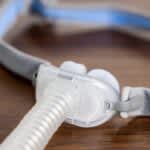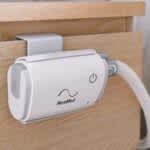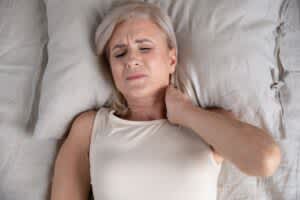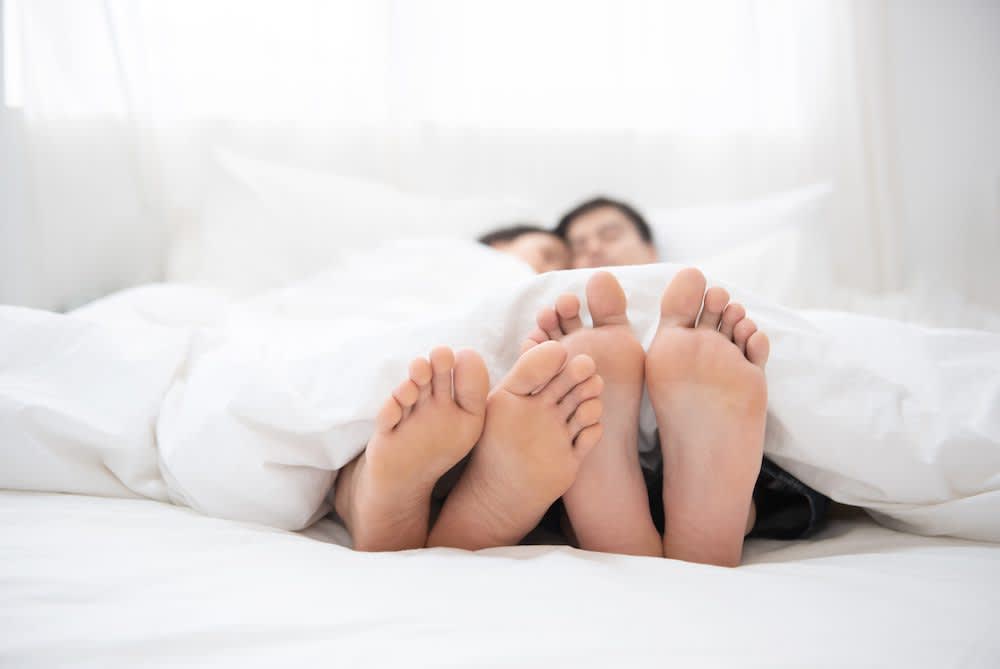Of all the medical problems that can arise, back pain is one of the most widespread. It’s estimated that 80% of people will experience back pain at least once in their lives. Lower back pain is ranked as the second most common reason why Americans visit the doctor, after colds and flu.
Your lower back carries most of your weight. So when it hurts, everyday activities like standing, walking, and sitting become a challenge. Sleep can become elusive as well, which often makes you feel even worse during the day.
Fortunately, there are a number of measures you can take to learn how to sleep with lower back pain, recover from it, and prevent it from coming back.
What Types of Lower Back Pain Are There?
Lower back pain can take many different forms. It can be acute and last only for a short period of time, or it can be chronic if it lingers for longer than three months. Some people experience tingling or a dull, nagging ache. Others may feel a sharp or sudden pain in their back.
Back pain is most often caused by strain, trauma, or damage to muscles and ligaments. A blow to the back, jolt, or anything that adds pressure on your tissues or spinal bones can trigger a few days or weeks of back pain.
How Does Lower Back Pain Impact Sleep?
Unsurprisingly, sleep and pain affect each other. Back pain can lead to sleep problems, and, in turn, sleep problems can worsen pain.
Chronic pain is tied to high rates of insomnia. What’s more, it lowers sleep quality. Back pain can keep people from experiencing rejuvenating deep sleep. People with chronic lower back pain who don’t sleep well report higher pain intensity, worse mood, and lower ability to move and function the next day.
Sleep supports almost every system in our bodies, and it’s important for everyone to prioritize getting a good night’s sleep. But it’s especially critical when dealing with lower back pain to make sure that your sleep needs are being met so that you can fully benefit from the restorative power of sleep.
Risk Factors for Lower Back Pain
Most people will experience back pain at some point. But certain factors can increase your likelihood of developing lower back pain.
- Age: Risk for back pain increases as we get older. This is due to a number of related factors, including decreasing bone density and muscle tone as well as a loss of flexibility in discs in the spine.
- Lifestyle: Your daily choices and habits have an impact. Maintaining a sedentary lifestyle with little to no exercise can make you vulnerable to back problems, as can engaging in strenuous activity after days of inactivity. Smoking also increases the risk of back injury.
- Pre-existing conditions: Sometimes, back pain can be due to a disease like arthritis or cancer, or it can be related to a mental health condition like depression.
- Occupation: Some jobs come with a higher risk. Occupations that require heavy lifting, pushing, pulling, or twisting can lead to injury and back pain. People who have desk jobs can also experience lower back pain if they have poor posture or use furniture that doesn’t support the back.
What Is the Best Way to Sleep with Lower Back Pain?
Some sleep positions are better than others for sleeping with lower back pain. Your mattress can also play a major role in how you sleep.
Sleep Position
Sleeping on your side with your knees bent can help with back pain by opening up the spine’s joints and reducing pressure. When side sleeping, it may be helpful to keep your knees separated with a pillow.
If you prefer to sleep on your back, you may find it more comfortable to elevate your head and keep a pillow beneath your knees.
Try not to sleep on your stomach, if that’s possible.

Mattress Selection
The research on the best mattress for back pain is limited, but some evidence points to softer mattresses being more helpful at alleviating pain than firmer mattresses in people with chronic back pain.
Keep in mind that people with a higher body weight may benefit from a firmer mattress than people with a lower body weight. People who are heavier can experience sinking on a softer mattress, which can impact the spine’s alignment.
Other Tips for Alleviating Lower Back Pain
There are a number of ways to help yourself feel better when dealing with back pain. Typically, most lower back pain goes away over time, but you may be able to gain temporary relief and speed up your recovery.
Practice Home Care
Simple measures at home can be used to help minimize the aches and discomfort of lower back pain. Ice and heat packs can be helpful for improving mobility and reducing pain and inflammation.
Over-the-counter painkillers and anti-inflammatory drugs can relieve back pain and help with reducing discomfort. Talk to a doctor about the best medication for your specific situation.
Rest Your Body
Sometimes back pain can be a result of repetitive movement or overusing your back. Try to get some rest and avoid straining your back to give your body time to heal. But be careful not to lie in bed too long. For most people, one to two days of bed rest is all that is recommended.
Stay Active by Stretching and Exercising
It may seem counterintuitive, but exercise can be one of the best ways to recover from lower back pain. Although you might worry that it could make your pain worse, research actually shows that physical activity can be a safe and effective way to help treat lower back pain.
Back pain often comes with a limited range of motion. Being physically active can help speed up recovery, ease muscle spasms, and prevent muscle loss. At the same time, building up your muscle strength and overall flexibility can strengthen your core, which can help reduce the risk of lower back pain and injuries.
But be careful, and pay attention to your body while you’re working out. If you’re unsure on what exercise to do, consider speaking to a physical therapist, doctor, or trained fitness professional to help you determine the right one for you.
How to Prevent Lower Back Pain
Lower back pain can be preventable, especially pain due to improper posture or lifting heavy objects. This means you can take steps to protect yourself and reduce your risk of back injury.
- Improve your posture: Avoid slouching. If your job requires long periods of standing, see if it is possible to alternate between resting one foot at a time on a stool or surface throughout the day.
- Lift heavy objects safely: When preparing to pick up a heavy object, bend your knees and tighten your core. Have someone else help you lift an item that’s too heavy for you. If you’re unsure on how to properly lift, reach out to a physical therapist or fitness expert for help.
- Quit smoking: It’s never too late to experience the health benefits of quitting smoking. Ask your doctor about methods you can use to help you quit. Seek support from loved ones, and contact a tobacco cessation service.
- Drive carefully: Avoid driving long distances if you have lower back pain. If you do need to take a long-distance trip, take walking breaks every hour. Also, bring your car seat forward and upright to prevent bending when driving.
- Swap your furniture: Consider changing out your office seat and desk for ones that provide better support. Ergonomic furniture can help with supporting your back and protecting you against back injury. Work chairs with straight backs, armrests, and swivel seats can provide better support.
When to Talk to Your Doctor About Your Lower Back Pain
Contact a doctor if your back pain has persisted for longer than one month or if you’re not able to manage it on your own. It’s also important to seek medical care if you’re experiencing any of the following:
- Back pain after a fall or injury
- Severe back pain
- Pain that gets worse when lying down
- Weakness or loss of feeling in your legs or pelvis
- Loss of bladder control or pain when urinating
Medical treatment generally depends on the type of pain you have, including what is causing the back pain, how long it has lasted, and how severe it is. Most types of lower back pain do not require surgery. Treatment options may include prescription medications, massage, acupuncture, spinal manipulation, cognitive behavioral therapy, and physical therapy.
References
The Sleep Doctor Forum: Real Experiences, Real Connections
Continue the discussion on the Sleep Doctor Forum. Connect with experts and fellow forum members on CPAP, sleep apnea, and all things sleep. A priceless resource that’s free to join.







































